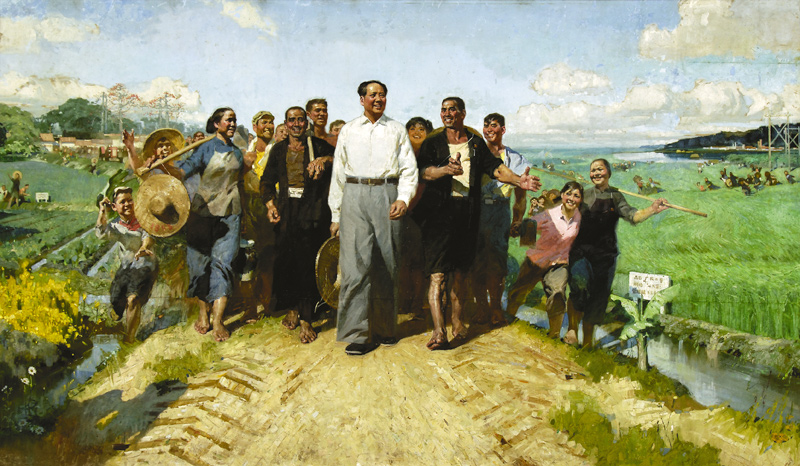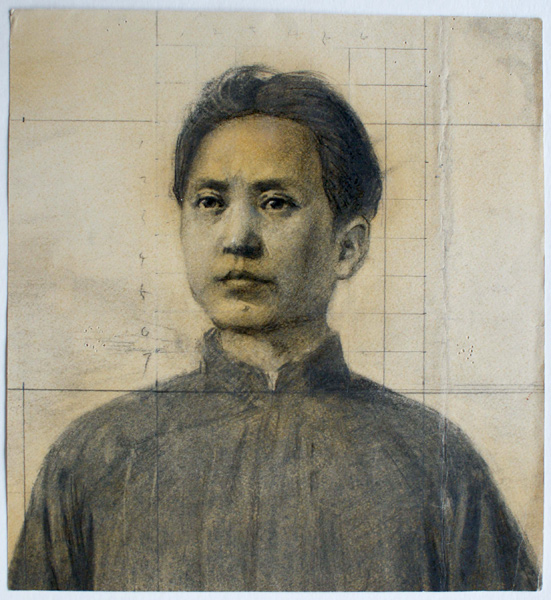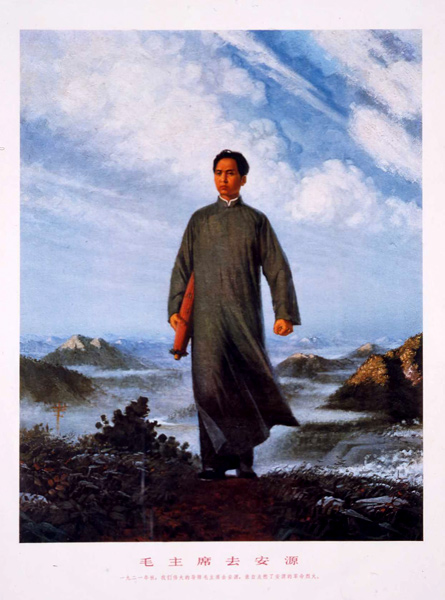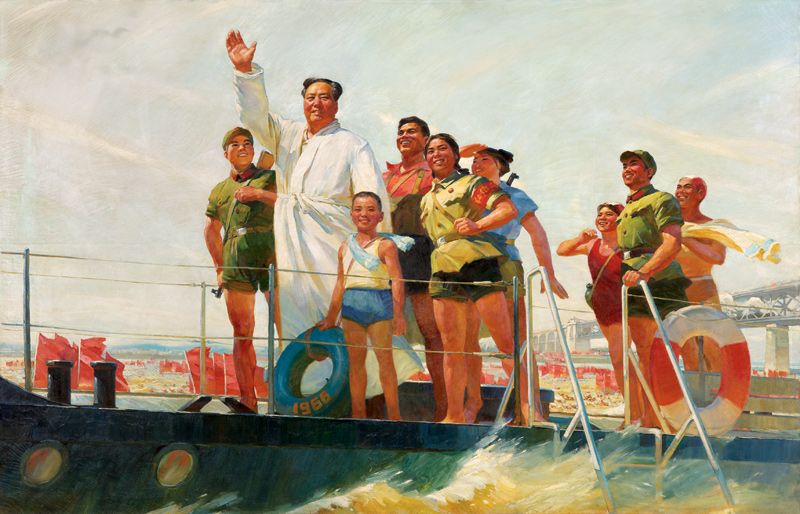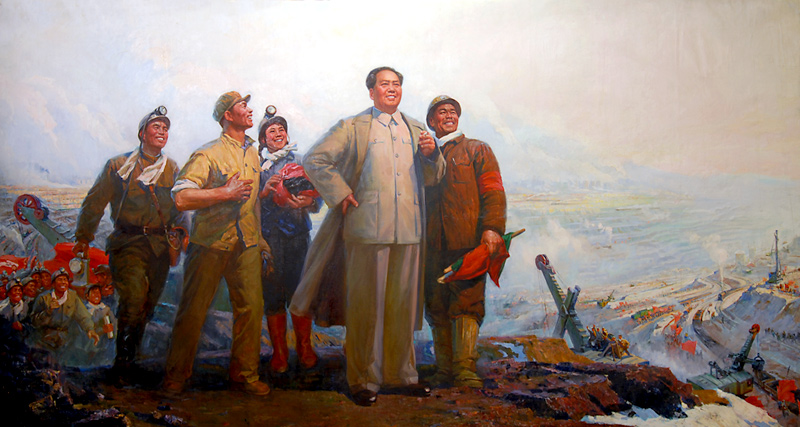Cult of Mao
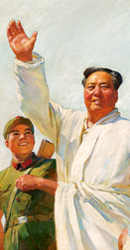 The earliest published portrait of Mao Zedong was created in 1933. In this early period, portraits of Mao were most often woodblock prints and varied greatly in style. When the People’s Republic of China was founded in 1949, portraits of Mao were standardized by the Central Propaganda Department. When the Cultural Revolution began in 1966, representations of Mao became more idealized. Artists were encouraged to create works that were “red, bright, and shining,” which translated into the use of warm tones and smooth brushwork, a style influenced by Russian socialist realism. In works of this period, Mao is often surrounded by a luminescence that seems to radiate from his body. When the Cultural Group of the State Council was established in 1971, art production became even more centralized, and a greater number of works featuring Mao were created. Most of the works in this section of the exhibition are drawn from the period between the mid-1960s through mid-1970s, when the greatest numbers of Mao portraits were produced. The two oil paintings that received the most attention when they were originally exhibited are Tang Xiaohe’s Strive Forward in Wind and Tides and Chen Yanning’s Chairman Mao Inspects the Guangdong Countryside. Both of these large-scale history paintings were created by young artists (in their late twenties and early thirties) and were reproduced extensively as posters.
The earliest published portrait of Mao Zedong was created in 1933. In this early period, portraits of Mao were most often woodblock prints and varied greatly in style. When the People’s Republic of China was founded in 1949, portraits of Mao were standardized by the Central Propaganda Department. When the Cultural Revolution began in 1966, representations of Mao became more idealized. Artists were encouraged to create works that were “red, bright, and shining,” which translated into the use of warm tones and smooth brushwork, a style influenced by Russian socialist realism. In works of this period, Mao is often surrounded by a luminescence that seems to radiate from his body. When the Cultural Group of the State Council was established in 1971, art production became even more centralized, and a greater number of works featuring Mao were created. Most of the works in this section of the exhibition are drawn from the period between the mid-1960s through mid-1970s, when the greatest numbers of Mao portraits were produced. The two oil paintings that received the most attention when they were originally exhibited are Tang Xiaohe’s Strive Forward in Wind and Tides and Chen Yanning’s Chairman Mao Inspects the Guangdong Countryside. Both of these large-scale history paintings were created by young artists (in their late twenties and early thirties) and were reproduced extensively as posters.
Intro | Mao | To Rebel | Never Forget | Up to the Mountains | Archive | Long March
Chairman Mao Inspects the Guangdong Countryside
1972
Oil on canvas
67 15/16 x 116 in. (172.5 x 294.5 cm)
Sigg Collection
Drawing study for Chairman Mao Goes to Anyuan
1967
Pencil and gouache on paper
11 15/16 x 11 1/16 in. (30.3 x 28 cm)
Collection of Liu Chunhua
Chairman Mao Goes to Anyuan
1969
Poster
41 1/2 x 29 7/8 in. (95.2 x 76 cm)
Collection of Yan Shanchun
Strive Forward in Wind and Tides
1971
Oil on canvas
68 15/16 x 116 in. (172.5 x 294.5 cm)
Private collection
Tang Xiaohe graduated from Hubei Institute of Fine Arts in 1965 and currently lives in Wuhan.
Mao Inspects Wushun Opencut Coal Mine
1972
Oil on Canvas
167 1/4 x 72 7/8 in. (425 x 185 cm)
Private collection
Wu Yunhua graduated from the Lu Xun Academy of Fine Arts in 1968 and carried out advanced study at the Central Academy of Fine Arts in Beijing. He is Vice Chairman of the Liaoning Artists Association and Director of the Chinese Oil Painting Society. He currently lives in Shengyang.
Intro | Mao | Cultural Diplomacy | Never Forget | Up to the Mountains | Archive | Long March

